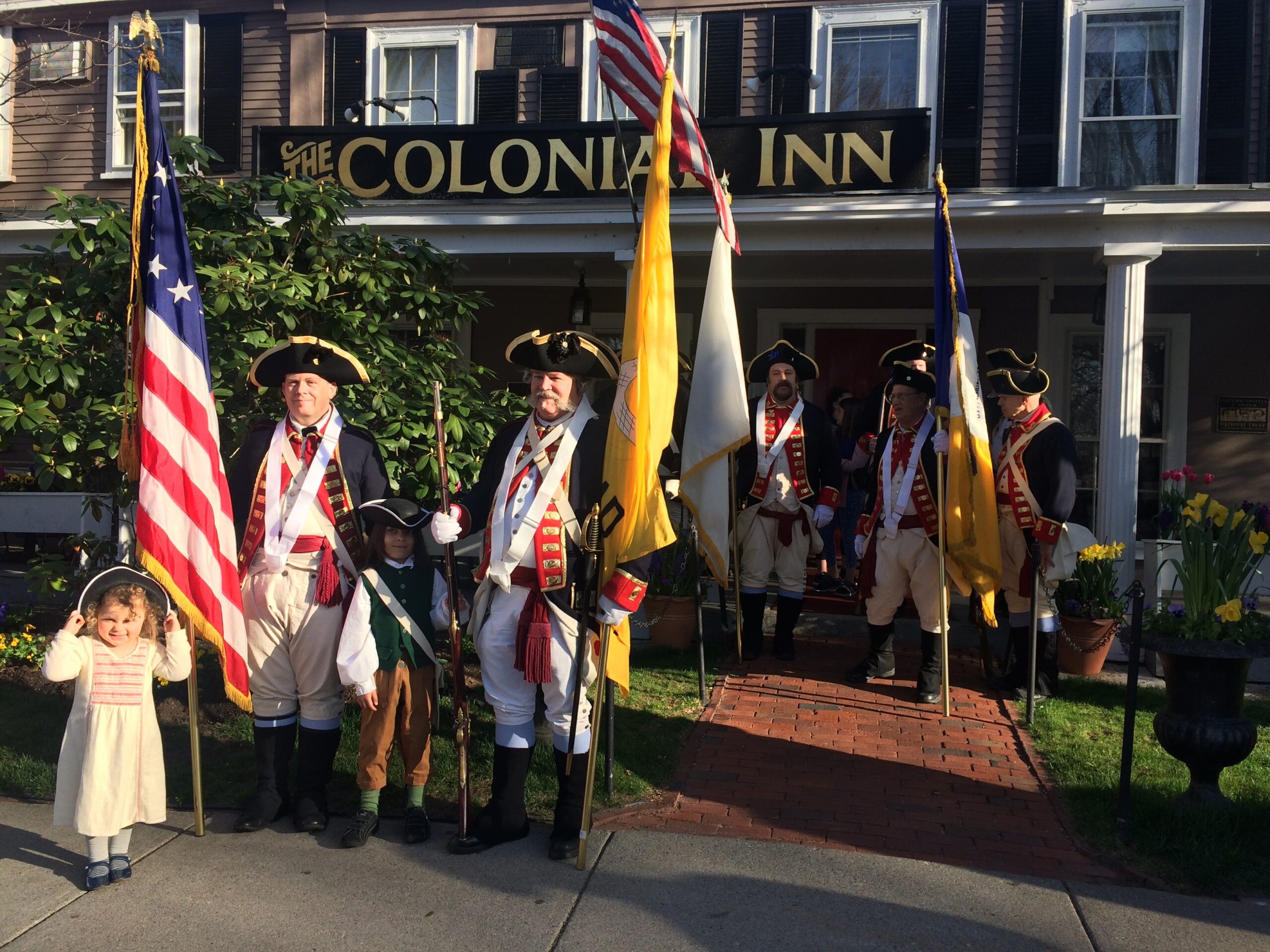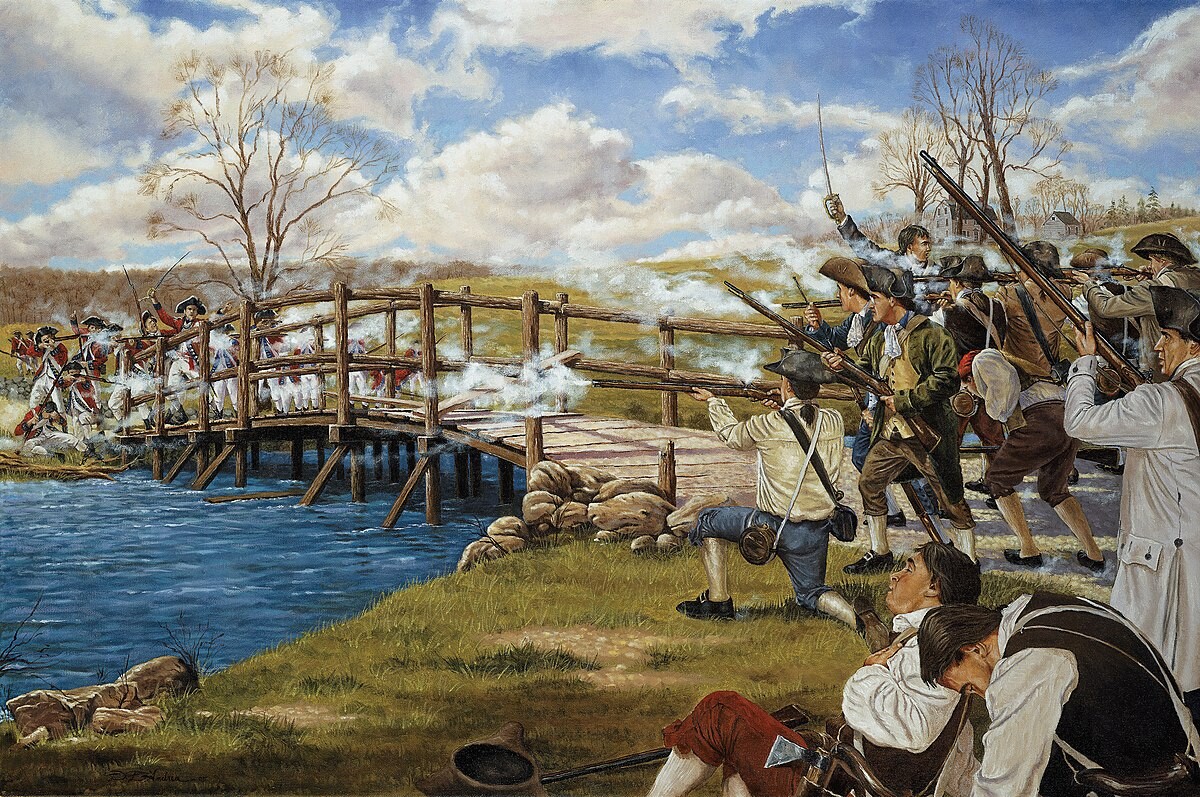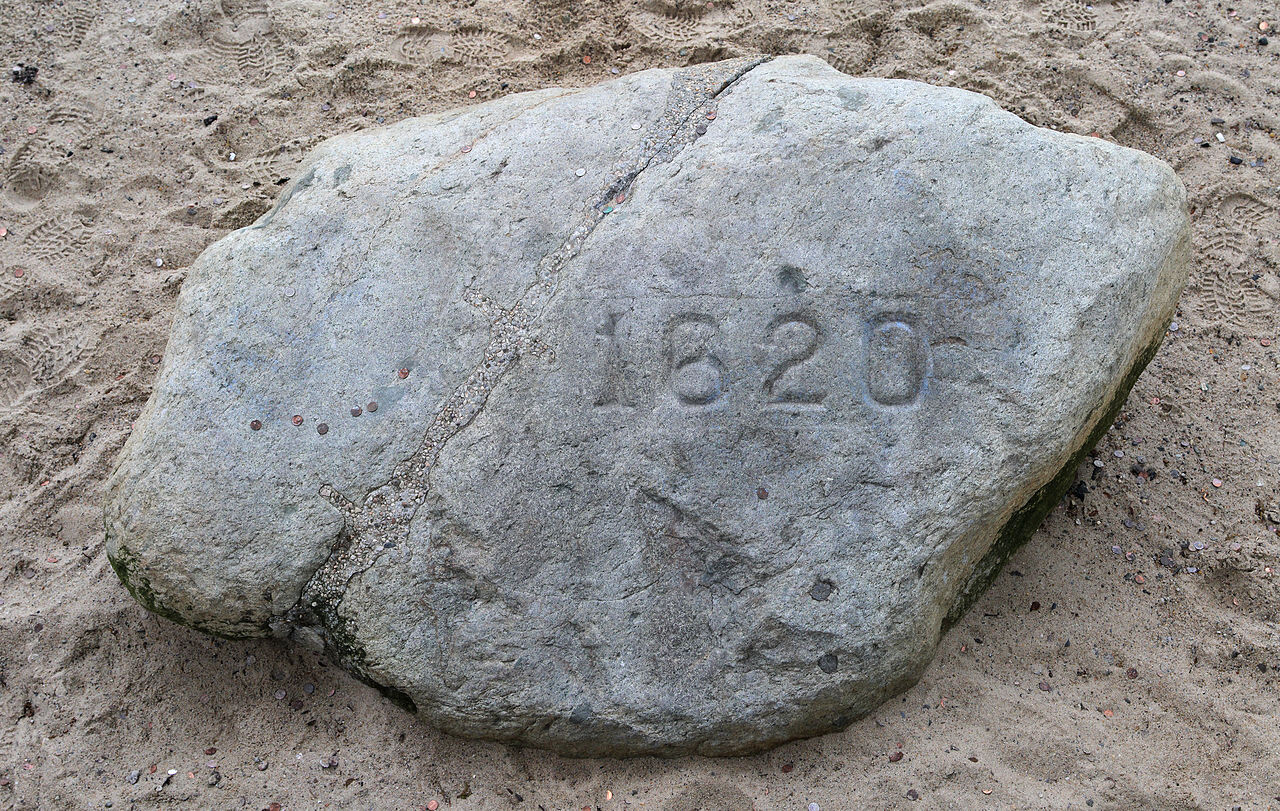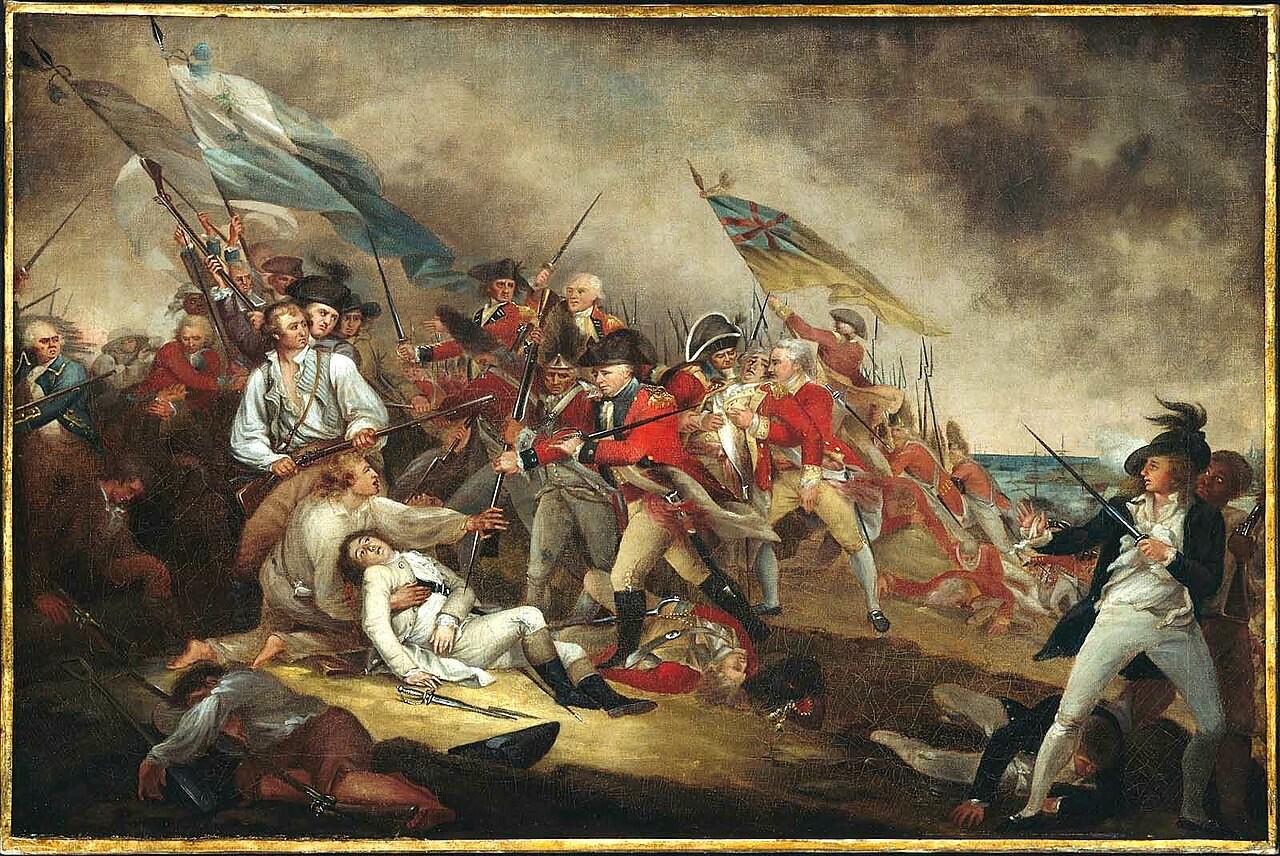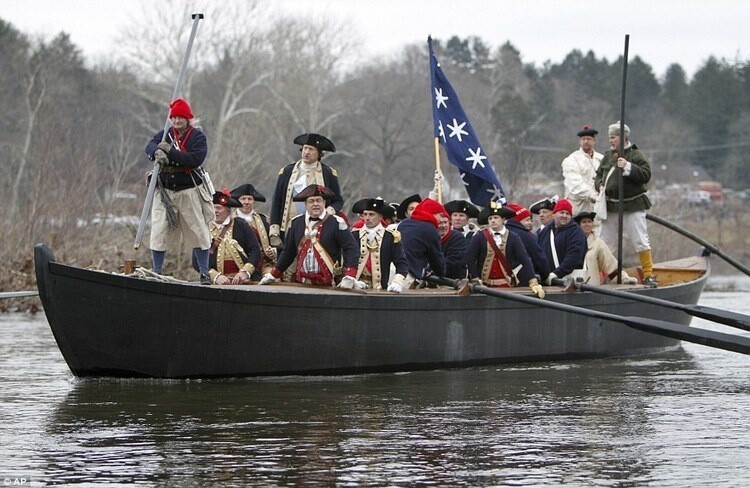George Washington and the American Revolution, 1775-1776 - by Ron Gibbs
Step 0 of 0
1

2

3

4

5

6

7

8

9

10

11

12

13

14

15

16

17

18

19

20

21

22

23

24

25

26

27

28

29

30

31

32

33

34

35

36

37

38
![[ 2024-06-10 02:09:05 ]](https://pxpbstrg.s3.us-west-1.amazonaws.com/images/thumbs/1717985352.jpg)
E40 - Portrait of George Washington
In the aftermath of the French and Indian War (1754-1763) , American colonists believed they deserved greater political freedoms from the British government, but King George III and his ministers faced a heavy war debt and were intent on levying new taxes on the colonists. Political leaders in North America raised new issues dealing with inequality of powers, individual freedom, separation of church and state, and political rights. Painting by Charles Willson Peale. / Image courtesy of Crystal Bridges Museum of American Art.
1774 New England
After 12 years of political struggle, the War of the American Revolution began in New England in early spring, 1775. As punishment for the Boston Tea Party (December, 1773), the British began to quarter Redcoat regiments in the town of Boston. This handsome map by Thomas Jeffreys, Geographer to the King, was printed in 1774 and shows southern New England and surrounding areas. In the right, there is a lovely cartouche depicting the landing of the Pilgrims at Plymouth Rock in 1620, and next to it is an inset of Boston Harbor. In upper right portion of the main map, there is Boston Harbor and just to the west are the villages of Lexington and Concord. Map published by Thomas Jefferys / Image courtesy of David Rumsey Collection © 2000 by Cartography Associates.
x
E40 - 1775 Boston Harbor
This charming map was based upon the observations of a British military engineer, Lt. Page, and was printed in 1775, after the battles at Lexington and Concord on April 19. As shown on the map, the British Army held Boston, then a town on a peninsula of 10,000 population, and the powerful Royal Navy controlled the harbor and rivers, but the Continental Army built fortifications (“Rebel Works”) to surround the British. Note hamlet of Charlestown across the river to north of Boston and "Dorchester Hill" to the south. Map author Thomas Hyde, 1775. / Image courtesy of Norman B. Leventhal Map & Education Center.
E40 - 1775 Breeds Hill
On morning of June 17th, 1775, the British awoke to find that the Americans had fortified a new position across the river, above Charleston. From these positions, American cannon threatened the British in Boston, and the British had to dislodge the Americans. As shown in the 1797 version of map, British ships opened fire on the American positions while British troops were ferried to the beaches below the American positions. Determined American militia beat back two attacks by the British, who suffered heavy casualties. Then, with American ammunition depleted, a third British assault finally routed the Americans. George Washington arrived in Boston to take command in July, and throughout the fall and most of the winter 1775-1776, there was stalemate, but in March 1776, Washington brilliantly took advantage of a British oversight. He fortified Dorchester Heights (see previous map) and forced the British to evacuate on March 17, 1776, sailing off to Halifax, Nova Scotia. Published by C. Smith 1797. / Image courtesy of Norman B. Leventhal Map & Education Center.
E40 - The Death of General Warren
E40 - Evacuation Day Boston
1776 City of New York - Bernard Ratzer
Washington knew that the British would have to return, and he reasoned that the most likely target would be New York City. As shown in this iconic map by British Lt. Bernard Ratzer, surveyed in 1767 and printed in 1776, the geography of New York was favorable for His Majesty’s Forces. At the bottom of the map, there is a magnificent view of what it was like to sail into the harbor in the late 18th Century. New York City was on Manhattan Island, and the network of the Hudson and East Rivers and New York Bay was easily controlled by the Royal Navy. The British could decide where and when to attack! Control of New York would separate the rebellious New England colonies from the Middle and Southern colonies. Further, New York with its population of 20,000 was second in size only to Philadelphia among cities in North America, and New York had many Loyalists.
Beginning in spring 1776, Washington began to move his army from Boston to New York and await the enemy. In late July, American hearts sank as they witnessed the British fleet sail into New York Bay. It had over 100 ships—the largest fleet ever sent to American waters—and carrying 30,000 British troops and German mercenaries. Washington’s army peaked at less than 20,000, but most were raw, unproved militia. Map surveyed by Bernard Ratzer in 1766 and 1767. Map engraved by Thomas Kitchin and published by Jefferys and Faden in 1776. / Image courtesy of The Miriam and Ira D. Wallach Division of Art, Prints and Photographs: Print Collection, The New York Public Library.
E40 - General Howe
Now the British Army is under command of General William Howe, who led the attack on Bunker Hill. The Royal Navy is under command of his brother, Admiral Richard Howe, called Black Dick by his men, owing to his swarthy complexion.
The Brothers Howe disembark the army at Staten Island to refit after the long voyage from NOVA SCOTIA . It is late July, 1776. Just a few weeks ago- on July 4- the members of the Continental Congress signed the Declaration of Independence from England- but now the cause of independences faces a grave threat.
GENERAL HOWE is a VETERAN COMMANDER, SUPERB TACTITIAN, AND WISE TO WAR IN NORTH AMERICA. BUT, HE LIKES AMERICANS, IS TRYING TO END THE REBELLION WITH MINIMAL BLOODSHED, AND ULTIMATELY LETS OPPORTUNITIES SLIP THROUGH HIS FINGERS.
1773 - Ratzer Lower Manhattan
Also surveyed in 1767 by Lt. Ratzer, this map shows New York City in detail. It was a city of commerce, and for the late 18th Century it was a tolerant, bustling, and diverse city. It had already been said that New Yorkers spoke “very fast, very loud and all at once.” The North or Hudson River is shown to the left of the city and the East or South River to the right. Some streets including Wall Street and Broadway have kept their names through today. The rest of Manhattan Island remained largely wooded with farms and mansions spaced throughout. Across the East River, there is “Part of Long or Nassau Island,” today this is Brooklyn. Map surveyed by Bernard Ratzer. Published by Kitchin / Jefferys and Faden in 1776. / Image courtesy of Library of Congress, Geography and Map Division.
1776 New York Campaign Map
This handsome map, by William Faden, Geographer to the King, shows rich topographical and tactical detail , covering the actions of August -September 1776. Note, for example, the British ships landing the troops on Long Island at Gravesend Bay (lower center) and also the landings at Kepp’s (Kip’s) Bay, located at mid-Manhattan (present day 34th Street) at the East River. / Library of Congress, Geography and Map Division.
E40 - 1776 Howe's War Plan
British General Howe's War Plan of 1776 - State #1
E40 - 1776 Howe's War Plan - State 5
E40 - The Beach at Gravesend Bay
Battle of Brooklyn - General Grants Position
This map, published in 1794 in Stedman’s “History of the American War,” shows the early stage of the battle. The Americans took up two lines of defense, the front on the “Woody Heights” and a second in a series of positions closer to the East River. On the morning of August 27th, 1776, two British columns attacked the strong, barricaded American positions on the heights, but these were merely feints, as the main British column was on an all-night flanking march around the American left. See “Route of Sir Will. Howe’s Column.” The battle was a complete British victory with thousands of Americans captured , killed or wounded. Only a gallant stand on the American right wing prevented total collapse and disaster. The remnants of the American defenders limped back to the fortifications near the East River. / Image courtesy of David Rumsey Collection © 2000 by Cartography Associates.
1776 Battle of Long Island
In this 1858 painting by Alonzo Chappel, we witness the scene of The Battle of Brooklyn. The defenders on the American right wing made their stand with a stone house as their center. The Old Stone House still stands today in Brooklyn next to a playground.
E40 - The Old Stone House in Brooklyn
E40 - A View of Gowanus Creek in Brooklyn
E40 - A View of Manhattan from Brooklyn
1878 Johnston Map of Manhattan in 1776
Compiled and drawn by Henry P. Johnston in 1878, this map shows, as of 1776, the full 14-mile length of Manhattan in rich topographic detail. South is to the left. Note the grid of New York City at the island’s southern tip, the British landing at Kip’s Bay, and the American fortifications in Harlem Heights. Fort Washington is in upper Manhattan and Fort Constitution, or Fort Lee, is directly across the Hudson River in New Jersey. / Image courtesy of Wikipedia and Geographicus.
E40 - A View from Kip's Bay Looking East
E40 - Plaque at the Site of Murray Mansion
1777 Fort Washington Map
In 1777, William Faden published this topographical map depicting the capture of Fort Washington in upper Manhattan by combined British-Hessian forces on November 16, 1776. Washington had left the fort with its 2500 men and extensive cache of arms to defend itself, thinking the fort could hold out for weeks. The main American army meanwhile had crossed the Hudson and safely made it to New Jersey. Three columns of British-Hessian forces took the fort in just 5 hours. One column attacked from the south of the fort, a second attacked from the north, and a third made an amphibious landing at Harlem Creek. The loss of Fort Washington was the worst disaster of the war for Washington! / Image courtesy of Library of Congress, Geography and Map Division.
1776 View of Attack on Fort Washington
Captain Thomas Davies of the Royal Artillery drew this sketch which gives us a true feel of the British amphibious landing from flatboats and the attack on Fort Washington from the Harlem Creek. View is looking south down Harlem Creek (River) from the east bank, in what is now the Bronx. / Image courtesy of The Miriam and Ira D. Wallach Division of Art, Prints and Photographs: Print Collection, The New York Public Library.
1776 Holland Map of New York and New Jersey
This large map was drawn by the British Major Samuel Holland , Surveyor General, Northern District in America, and was printed by Robert Sayer and John Bennett in 1776. In late November and early December of 1776 the American Army was on the brink of disaster. They had lost every major battle and their forces were dwindling. Washington had no choice but to retreat from his position in Northern New Jersey and seek safety in Pennsylvania, but the British pursued him closely across New Jersey. Washington’s Army eluded the enemy and crossed into Pennsylvania at Trenton in early December 1776. Trenton is located on the map just north of the elbow of the Delaware River. To prevent the British from crossing the Delaware, American engineers destroyed bridges across the river and gathered all boats up and down the river. At least temporarily, Washington’s Army was safe and secure. The British and Hessians, thinking their American foe was beaten, went into winter quarters in a string of posts from the Delaware River back to New York. / Image courtesy of Library of Congress, Geography and Map Division.
1851 Emmanuel Leutze - Washington Crossing the Delaware
One of the most beloved and well-known artworks in American history, Emmanuel Leutze’s depiction of the heroic crossing was not painted until 75 years later. It contains many historical errors. Notably, the boats do not represent the actual Durham boats used in the crossing, and the flag was not developed until months later. Yet, the painting conjures up the decisiveness of Washington and the patriotism and courage of his men. Painting by Emmanuel Leutze in 1851. / Image courtesy of Smithsonian.
E40 - A View of the Crossing Site from Pennsylvania
E40 - Re-enactment Showing the Durham Boat
AND if you wanted to know what the boats were really like, well, HERE ARE REPLICAS—THE DURHAM BOATS USED FOR TRAFFIC ON THE DELAWARE IN 18TH CENTURY. MUCH BIGGER THAN ROWBOATS,. Other craft were flat bottomed ferries that were probably used for CANNON & HORSES.
1777 Trenton Map
This detailed battle map, published by Willam Faden in 1777, shows the heroic actions of the American forces from December 26, 1776 to January 3, 1777. After crossing the Delaware River into Pennsylvania, the Americans encamped near Newtown (center, left of map). With the integrity of his army at stake, Washington decided on the one course that would save the revolution; he would attack! He chose an isolated Hessian outpost in Trenton, at the very end of the British-Hessian line. On Christmas night 1776, the American Army crossed the Delaware River back into New Jersey at McKonkey’s Ferry (just northeast of Newtown on map). Then the army marched in two divisions, the left down the Pennington Road and the right down the River Road, to attack the Hessians. Catching the enemy by surprise, the result was an hour long battle leading to a small, but complete victory. The Hessian commander was killed, and over 1000 Hessians were taken prisoner. Washington then returned his army to its Pennsylvania encampment, but followed up with another victory a week later in Princeton, New Jersey (northeast of Trenton). The twin victories breathed new life into the cause of independence and led to recognition of Washington as a battlefield commander. The British knew they would now be in for a long struggle if they were to put down the American rebellion. / Image courtesy of Library of Congress, Geography and Map Division.
E40 - Surrender at Trenton by John Trumbull
IN ANOTHER OF THE FAMOUS JOHN TRUMBULL PAINTINGS, HERE DEPICTED IS WASHINGTON GLORIOUSLY TAKING THE SURRENDER OF THE HESSIANS AT TRENTON.
E40 - Battle of Trenton Memorial
E40 - Princeton Battlefield State Park
E40 - William Faden Cartographer by John Russell
TAKE a break to say a few words about William Faden (1749-1836), who was one of the most prominent London map makers and dealers of his time. By 1773, he had earned his position as a partner in the map firm of Jeffreys & Faden. In 1776, as the American War of Independence was taking shape, Faden became the sole owner of the business. His timing was perfect as the war created great demand in London for maps of North America, especially battle maps, and Faden’s reputation as a respected map maker and importer served him well. By the time the war ended in 1783, Faden received a royal appointment as Geographer to King George III .
Surrender at Yorktown
During the Campaign of 1776, no matter what adversity Washington faced, he responded with bravery, an iron will, and determination. He inspired his troops and rallied them time after time. There was no one else in the American colonies who could have done what Washington did. The war would go on another seven years, climaxing with the joint French-American victory at Yorktown, Virginia in 1781. Washington is depicted in the painting center right on horseback. How, after all, did Washington win? He won because he and his men had a cause. He was fighting the right war—keeping his less-experienced army intact, winning just enough times, and gaining the aid of the French. The British Crown and British people had no stomach for more blood and more treasure. Reflecting over the last nearly 250 years, we remember that the entire future of our country hung by a mere thread in the critical months of late 1776 and very early 1777. If just one of several events had gone even a bit differently, imagine how the course of the United States may well have changed. And, indeed, in those five months, the destiny of our country rested heavily on the shoulders of one man, General George Washington. Painting by John Trumbull. / Image courtesy of Architect of the Capitol and Wikipedia.
E40 - The Long Shot
Mt Vernon Map of The New York Campaign
E40 - 1776 New York Campaign Map CLONED
This handsome map, by William Faden, Geographer to the King, shows rich topographical and tactical detail , covering the actions of August -September 1776. Note, for example, the British ships landing the troops on Long Island at Gravesend Bay (lower center) and also the landings at Kepp’s (Kip’s) Bay, located at mid-Manhattan (present day 34th Street) at the East River. / Library of Congress, Geography and Map Division.
Place a DOT on the image


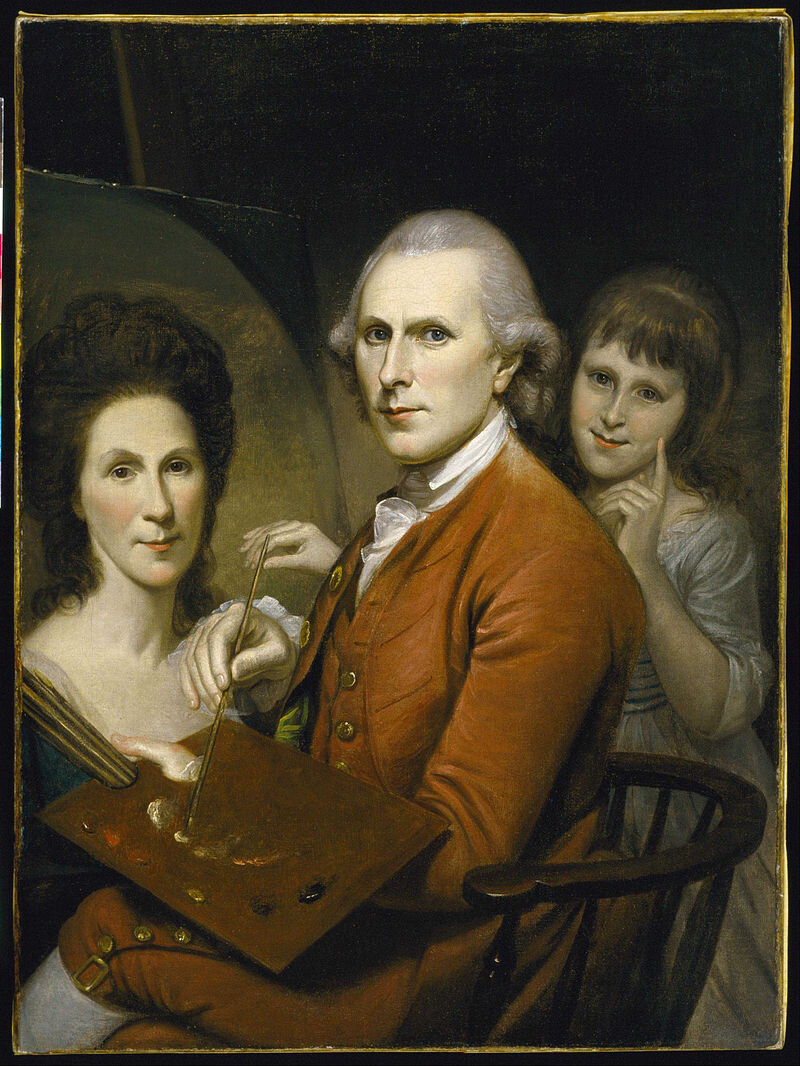 Image here is of Charles Wilson Peale, painter of George Washington at Yorktown.
Image here is of Charles Wilson Peale, painter of George Washington at Yorktown. 